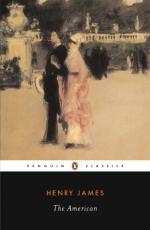BENJAMIN BABCOCK
P. S. I am greatly perplexed by Luini.
This letter produced in Newman’s mind a singular mixture of exhilaration and awe. At first, Mr. Babcock’s tender conscience seemed to him a capital farce, and his traveling back to Milan only to get into a deeper muddle appeared, as the reward of his pedantry, exquisitely and ludicrously just. Then Newman reflected that these are mighty mysteries, that possibly he himself was indeed that baleful and barely mentionable thing, a cynic, and that his manner of considering the treasures of art and the privileges of life was probably very base and immoral. Newman had a great contempt for immorality, and that evening, for a good half hour, as he sat watching the star-sheen on the warm Adriatic, he felt rebuked and depressed. He was at a loss how to answer Babcock’s letter. His good nature checked his resenting the young minister’s lofty admonitions, and his tough, inelastic sense of humor forbade his taking them seriously. He wrote no answer at all but a day or two afterward he found in a curiosity shop a grotesque little statuette in ivory, of the sixteenth century, which he sent off to Babcock without a commentary. It represented a gaunt, ascetic-looking monk, in a tattered gown and cowl, kneeling with clasped hands and pulling a portentously long face. It was a wonderfully delicate piece of carving, and in a moment, through one of the rents of his gown, you espied a fat capon hung round the monk’s waist. In Newman’s intention what did the figure symbolize? Did it mean that he was going to try to be as “high-toned” as the monk looked at first, but that he feared he should succeed no better than the friar, on a closer inspection, proved to have done? It is not supposable that he intended a satire upon Babcock’s own asceticism, for this would have been a truly cynical stroke. He made his late companion, at any rate, a very valuable little present.
Newman, on leaving Venice, went through the Tyrol to Vienna, and then returned westward, through Southern Germany. The autumn found him at Baden-Baden, where he spent several weeks. The place was charming, and he was in no hurry to depart; besides, he was looking about him and deciding what to do for the winter. His summer had been very full, and he sat under the great trees beside the miniature river that trickles past the Baden flower-beds, he slowly




